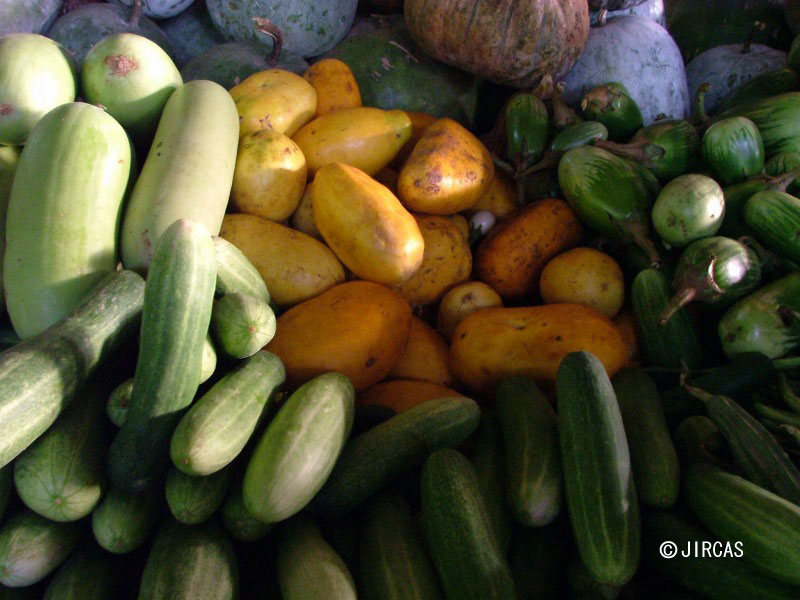Cucumis sativus L. (Cucurbitaceae)
- Scientific name
- Cucumis sativus L.
- Family name
- Cucurbitaceae
- Common name
- Cucumber (English); kyuri (Japanese)
- Local name
- Tangkwaa
Monoecious, annual, creeping or climbing herb, up to 5 m long, with stiff, bristly hairs. Stem 4–5-angled, sparingly branched, robust. Tendrils simple, leaf-opposed, up to 30 cm long. Leaves alternate, simple, triangular-ovate, 3–7-lobed, margin dentate, 7–15 × 7–12 cm; petiole 5–15 cm long. Flowers yellow, in leaf axil, unisexual, occasionally hermaphroditic, 2.5–3.5 cm in diameter. Male flowers predominating, in clusters of 3–7; stamens 3, free. Female flowers solitary, on short, thick pedicel, ovary inferior. Calyx campanulate, 5-lobed, densely hairy. Corolla widely campanulate, deeply 5-lobed, hairy, wrinkled. Fruit a pepo, hanging, fruit stalk 2–5 cm, shape, size and colour variable, from nearly globose to cylindrical, with scattered spinous tubercles and warts when young; flesh pale green, many-seeded. Seeds flat, ovate-oblong, white, smooth.
Often propagated by seed broadcasting together with upland rice at the beginning of the rainy season. Improved cultivars are commonly grown for their fruits. Several local landraces are grown in various region of Thailand by the local ethnic groups; the fruits of local landraces are available in local markets toward the end of rainy season.
Some landraces have acidic fruits and are used as lemon alternatives.
Some landraces have acidic fruits and are used as lemon alternatives.




